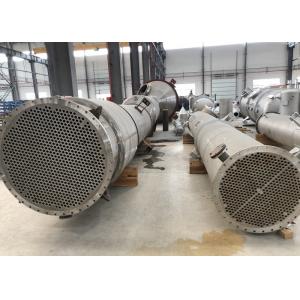

Add to Cart
Engineer-to-order multi-effect evaporation (MEE) train built around shell-and-tube heat exchangers for efficient concentration of liquids across food, chemical, and environmental applications. Staged effects reuse vapor energy, reducing utility consumption while maintaining stable capacity and product quality. Options include TVR or hybrid MVR for further energy savings.
Live steam heats the first effect; generated vapor drives subsequent effects in sequence, each at lower pressure/temperature. Optimized ΔT/LMTD, residence time, and circulation keep heat-transfer coefficients high and fouling low.
Wetted parts in SS316L/duplex (Ti/Hastelloy available for corrosives). Straight-tube or U-tube bundles, sloped/drainable layouts, and validated CIP enable long campaigns and fast turnarounds.
| Parameter | Typical Range* |
|---|---|
| Effects | 2–7 (duty/capacity dependent) |
| Steam economy (SE) | ~2.0–7.0 (↑ with more effects / TVR / MVR) |
| Operating mode | Vacuum, continuous |
| Film/loop ΔT | Low to moderate for gentle evaporation |
| Materials | SS316L / duplex; Ti/Hastelloy on request |
*Performance depends on feed composition, fouling tendency, compression ratio (if TVR/MVR), and exchanger design.
For scaling, particulates, or erosion risk, shell-and-tube offers higher robustness and easier mechanical cleaning.
Yes—start with pure MEE or MEE+TVR and add a mechanical vapor compressor to create a hybrid train with lower OPEX.
By managing ΔT/LMTD and velocity, dosing antiscalants, scheduling CIP, and selecting materials suited to the chemistry.
